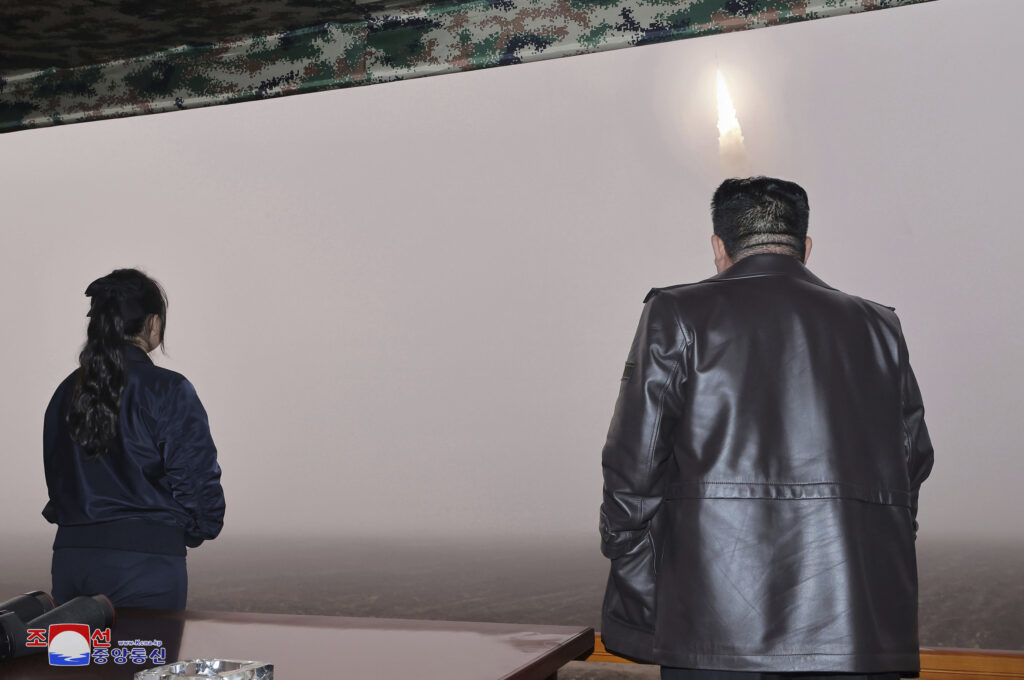In a provocative display of military prowess, North Korea declared on Friday that its latest intercontinental ballistic missile (ICBM) test positions the nation at the forefront of global military power.
However, analysts were quick to label the declaration as mere propaganda, asserting that the missile’s size renders it impractical for combat.
Launched on Thursday, the missile reportedly flew higher and longer than any previous weapon tested by North Korea.
Despite the impressive performance, experts suggest that the regime has yet to overcome critical technological challenges necessary for developing ICBMs capable of striking the U.S. mainland.
How Much of a Threat Are North Korea’s Nukes?
The state-controlled Korean Central News Agency identified the missile as the Hwasong-19, dubbing it “the world’s strongest strategic missile” and a “perfected weapon system.”
Kim Jong Un purportedly observed the launch, framing it as a demonstration of North Korea’s resolve against perceived external threats.
Images from the launch suggest the missile employs preloaded solid fuel, which enhances its maneuverability and makes it less detectable than traditional liquid propellants.
Yet analysts note that both the missile and its launch vehicle appear oversized, raising concerns about their mobility and survivability in wartime scenarios.
“When missiles increase in size, the launch vehicles do too, which hampers mobility,” explained Lee Sangmin, a researcher at South Korea’s Korea Institute for Defense Analyses.
How Effective is the Hwasong-19?
The Hwasong-19 is estimated to be at least 28 meters long—significantly larger than advanced U.S. and Russian ICBMs, which typically measure less than 20 meters.
This size may have made it easier for South Korean intelligence to anticipate the launch.
In the context of potential conflict, this increased detectability could expose the missile to preemptive strikes, undermining its strategic effectiveness.
Lee Illwoo of the Korea Defense Network suggested that North Korea’s larger missile design could accommodate more powerful warheads or multiple warheads.
However, he noted that such designs might favor liquid fuels, which offer greater thrust.
Some analysts speculate that North Korea could have used a dummy warhead during the test to achieve higher flight performance.
Despite North Korea’s claims of advancements in its nuclear missile capabilities, many experts assert that the nation has yet to develop missiles capable of reliably targeting the U.S. mainland.
Key technological hurdles remain, including ensuring warhead survivability during atmospheric reentry, enhancing missile guidance systems, and achieving the capability for multiple warheads to penetrate missile defenses. “Reentry technology is crucial for ICBMs, yet North Korea seems to prioritize range over these essential capabilities,” Lee Sangmin noted.
Recent state media reports surrounding the launch lack substantive details about the Hwasong-19’s technological specifications, leading experts to conclude that the emphasis is more on public relations than on genuine military advancement.
Previous North Korean claims regarding missile capabilities have often been met with skepticism. For instance, a reported multiwarhead test in June was dismissed by South Korea, which indicated the missile had malfunctioned.
Why is North Korea Supporting Russia in Ukraine?
North Korea’s missile program continues to be a concern for regional security, with the regime openly threatening its adversaries.
In response to the recent ICBM launch, foreign ministers from South Korea, the U.S., and Japan condemned the action as a violation of U.N. resolutions and reiterated their commitment to thwarting North Korea’s funding of its weapons programs.
On the sanctions front, South Korea’s Foreign Ministry announced unilateral measures against 11 North Korean individuals and four organizations linked to procuring missile components, although such sanctions are largely symbolic given the long-standing financial isolation of the North.
Simultaneously, South Korea and the U.S. conducted their first joint live-fire exercise using unmanned aerial vehicles, a demonstration of their military readiness amid North Korea’s ongoing threats.
This exercise included the deployment of South Korea’s RQ-4B Global Hawk and the U.S. MQ-9 Reaper drone.
Observers suggest that the recent ICBM test may have been strategically timed to capture attention ahead of the U.S. presidential election and to counter international backlash regarding North Korea’s troop deployment to support Russia’s efforts in Ukraine.
This military collaboration raises concerns that North Korea might seek advanced technology from Russia in exchange for its support in the ongoing conflict.
This article contains additional reporting from The Associated Press.
Read the full article here
